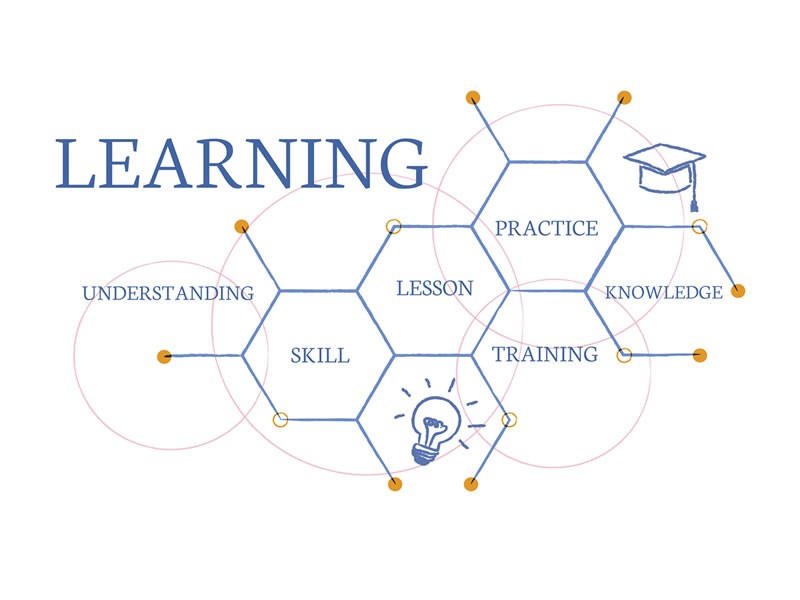Insight Blog
Agility’s perspectives on transforming the employee's experience throughout remote transformation using connected enterprise tools.
12 minutes reading time
(2498 words)
Knowledge Culture in Knowledge Management
Knowledge culture is a kind of company culture which persuades employees to identify and apply knowledge sharing as an appropriate behavior. But what more can we learn from Knowledge culture and managing knowledge within an organizations.
Knowledge culture in knowledge management is a topic that managers need to discuss more.
Despite the significant contributions that information technology has made to organization success, the key to knowledge management is held by humans, not computers.
The collective "know-how" that supports major business decisions and ongoing business processes are referred to as organizational skills.
Such competencies ultimately determine competitiveness because they are required for establishing and then executing market-winning strategies. Organizations must first identify and then develop the appropriate set of competencies. Explore why knowledge management is important, how to create a strategy for it, and explore some of the Knowledge Management Best Practices and Guidelines for 2022.
The use of superior abilities in light of superior knowledge results in a competitive advantage.
And becoming a long-term market leader necessitates an organization developing new knowledge and then efficiently applying it to adapt to change. Thus, deliberate knowledge creation is the highest embodiment of an organization's competencies and the fruit of a knowledge culture. But what are the characteristics of a knowing culture?
Assume an operations manager has a hunch, a nagging issue that won't go away, or a sensation that something isn't right, and starts to investigate it by posing probing inquiries. If the organization values learning, it is possible that change will occur soon.
The problem is to take action before the window of opportunity closes; in other words, to overcome the inertia that causes many businesses to be slow to respond.
Otherwise, the manager who asked the questions is likely to become dissatisfied and either become useless or spend a significant amount of time working covertly across the organization.
What Is Knowledge Management?
Knowledge management refers to the process of managing resource information efficiently within an enterprise organization. The four components of knowledge management include:
- The people or stakeholders
- The knowledge flow process
- The content or the documented knowledge
- Strategy
Effective knowledge management programs have dedicated workflows and use technology tools to align the content to the right people.
Organization leaders can help their employees become more responsive, innovative, receptive, and collaborative by utilizing the right knowledge management solutions. Learn more about the Top 10 Benefits of a Knowledge Base in 2022.
Many organizations are investing in knowledge management platforms for employees to quickly find, share, and collaborate on the information they need to perform their duties and responsibilities.
And a crucial aspect of implementing knowledge management is knowledge culture.
Knowledge culture in Knowledge Management Examples
Creating a strong knowledge culture in knowledge management isn't just about storing data — it's about empowering people to share, collaborate, and grow through continuous learning.
The best organizations make knowledge-sharing part of their daily workflow, not just a once-a-year training exercise.
Here are a few knowledge culture in knowledge management examples that show how leading companies turn information into a competitive advantage:
- Google – Open Knowledge Networks - Google's internal "Googler-to-Googler" (g2g) program allows employees to teach and mentor one another across departments. This fosters a culture where everyone feels responsible for sharing expertise, not hoarding it.
- NASA – Lessons Learned Database - NASA captures insights from every mission in its Lessons Learned system. Teams document successes, failures, and process improvements so future missions can build on proven knowledge instead of starting from scratch.
- Deloitte – Knowledge Sharing Communities - Deloitte operates industry-specific knowledge hubs where consultants collaborate globally. These communities combine structured repositories with informal conversations, supporting real-time decision-making.
- Microsoft – Viva Topics and Internal Wikis - Microsoft uses its own tools to tag, organize, and surface institutional knowledge. AI helps identify experts and highlight related documentation automatically, making information easier to find across teams.
- Toyota – Continuous Improvement (Kaizen) - Toyota's legendary "Kaizen" approach is a living example of a knowledge-driven culture. Employees at all levels are encouraged to document process improvements and share them daily — reinforcing collective intelligence.
- AgilityPortal – Digital Knowledge Spaces - Platforms like AgilityPortal make it easy for hybrid and remote teams to cultivate a knowledge-sharing culture through AI-powered search, community spaces, and collaboration tools. These digital spaces transform scattered information into shared wisdom accessible to everyone.
A true knowledge culture in knowledge management thrives when people feel confident to share, use, and improve upon existing knowledge.
Whether through mentorship, internal wikis, or digital workplaces, the goal is the same — make learning and collaboration part of everyday work, not an afterthought.
Importance of Knowledge Culture in Knowledge Management
The importance of knowledge culture in knowledge management cannot be overstated — it's the difference between organizations that simply collect information and those that use it to innovate, collaborate, and grow. A strong knowledge culture ensures that knowledge isn't trapped in silos but flows freely across teams, departments, and leadership levels.
At its core, a knowledge-sharing culture promotes continuous learning and transparency. Employees don't just consume information; they contribute to it — turning individual expertise into collective intelligence. This mindset transforms data into actionable insight, enabling faster problem-solving and better decision-making across the business.
Here's why the importance of knowledge culture in knowledge management matters more than ever:
- Encourages Collaboration Across Boundaries - Teams share best practices, reducing duplication of effort and speeding up innovation.
- Improves Decision-Making - Access to verified, shared knowledge empowers leaders and employees to make better, data-driven choices.
- Drives Employee Engagement and Retention - People feel valued when their knowledge is recognized and shared — fostering a sense of belonging and contribution.
- Protects Institutional Memory - A documented knowledge base prevents information loss when employees leave or roles change.
- Supports Organizational Agility - Companies with strong knowledge cultures adapt faster to market shifts because they can learn and pivot efficiently.
Modern platforms like AgilityPortal make cultivating this culture easier by integrating knowledge management tools, AI-powered search, and collaboration spaces that help employees find and share insights effortlessly — regardless of location or role.
The importance of knowledge culture in knowledge management lies in its ability to transform everyday work into a cycle of learning and improvement. When knowledge becomes part of the culture, organizations evolve from being reactive to being proactive — always learning, always improving, and always growing.
Knowledge Culture in KM – A Complete Guide
It is true that action is the key to learning, and a knowing culture is defined as constant learning from action.
Organizational learning is required because of the external world's rapid and major shifts in markets, customers, technology, competition, politics, and economics. Organizational transformation occurs when individuals perceive a need for change and build a case that persuades others that they are correct.
However, in order to construct such a case, they must first learn about the unfolding reality and then sell their ideas to a critical audience.
Create such a circumstance that necessitates new evidence that is specific to the situation at hand. To generate that evidence, new, purposeful action experiments are required.
You can manage knowledge in an organization by:
- Implementing knowledge management through a strategic initiative
- Implement knowledge management plan by using life cycle approach
- Remember that there are problems to overcome
- Focus more on process and strategy, not on knowledge management tool
- Gather knowledge as a byproduct of work activities
- Integrate into people's work routine
There are costs associated with developing a knowledge culture. Senior management must adopt a new behavioral style that emphasizes asking questions rather than offering answers, listening rather than speaking, and fostering innovation rather than short-term success.
Following the process indicated above, an organization will get a knowledge advantage if it becomes adept in obtaining unique data, turning it into information, and then-by testing new theories-converting this information to actionable knowledge.
Your experiments may not be successful, but they are one method of creating your own possibilities.
Here is why knowledge culture and knowledge management are important for your organization:
Reuse previous problem-solving experience
Reusing what others have already learned and done can save a significant amount of time and money, boost work efficiency, and reduce hazards.
To be successful in reusing information, it is critical to have a robust knowledge base and content that is easily accessible to all members of the organization.
Knowledge management components aid in streamlining work and enhancing staff efficiency.
People (user manuals, training documents), process (used techniques, best-proven practices, narrative, lessons learned), and technology are some of the components (e-learning, content management system, integrated chat applications).
Enhances skills and efficiency
Did you realize that your staff can spend a significant amount of time looking for the proper information or finding the relevant search result? It means that a lot of productive time is wasted looking for information.
The best knowledge-sharing techniques in an organization reduce the majority of the wasted time spent seeking information. At the same time, all employees will have simple access to the necessary information whenever and wherever they require it.
When employees are highly knowledgeable of the sources, workflows, and tools to manage information, they can enhance their skills and significantly boost their productivity and efficiency.
They don't have to rely on their supervisors or managers every time because they already have access to everything they need.
For organizations looking to further streamline this process, investing in advanced AI data analytics software can help transform raw data into actionable insights, making knowledge more accessible and empowering employees to make faster, better-informed decisions across teams.
For instance, enterprises using intranets or internal business websites can streamline employee information access. Employees don't have to open separate tools just to locate the necessary information.
Therefore, they can answer questions quickly to establish trust and maintain excellent customer service.
Encourage workplace innovation
Sharing the best information management methods encourages your staff to share their unique ideas and contribute to the achievement of improved results.
Knowledge stimulation and greater idea exchange enable employees to be more productive and on the cutting edge of new trends and markets.
Promotes decision-making that is both faster and better
Knowledge sharing within teams benefits not only your staff but also your organization's performance.
When all duties in the organization are completed efficiently, and each member works in a streamlined manner, it assures faster, better decision making and, as a result, increases the organization's productivity and performance.
Increase revenues and customer satisfaction
The importance of the client cannot be emphasized since it ranks ahead of finance and product in terms of achieving business success. Knowledge management is critical in customer relationship management.
Customers will become annoyed and ultimately disappointed if a customer care worker spends a long time searching for relevant information to remedy an issue or answer a query.
A knowledge-sharing platform can significantly cut search effort and time. It makes it easier to utilize by providing access to condensed information.
Increase revenues and customer satisfaction
The importance of the client cannot be emphasized since it ranks ahead of finance and product in terms of achieving business success. Knowledge management is critical in customer relationship management.
Customers will become annoyed and ultimately disappointed if a customer care worker spends a long time searching for relevant information to remedy an issue or answer a query.
A knowledge-sharing platform can significantly cut search effort and time. It makes it easier to utilize by providing access to condensed information.
Best Practices Sharing Platform & Process
The process of passing tacit (undocumented) and explicit (documented) information from one person to another is known as knowledge sharing.
Sharing information in a business not only boosts productivity but also enables people to accomplish their duties more effectively and efficiently.
Employees can work more efficiently and effectively if they have easy access to insights, resources, and expertise.
One of the most efficient methods for your organization to reap the benefits of information sharing is to incorporate it into your culture.
Tools for knowledge sharing
Investing in a knowledge-sharing platform like AgilityPortal is one of the easiest ways to develop a knowledge-sharing culture in your firm.
It enables users to search for content quickly and easily, ask questions, share files and videos, restructure their training, and motivate everyone, from interns to upper management, to share their knowledge.
Furthermore, you can always keep track of your employees' progress and how much information each employee contributes to the team with robust reporting and analytics.
You can encourage others who are either unwilling or simply less motivated to offer their thoughts by rewarding employees who share expertise more frequently.
Using social media features
Whether you like it or not, your employees are utilizing social media networks during the workday. Why not utilize it to share knowledge?
Social networking platforms such as Facebook, Twitter, and LinkedIn have swept the globe.
From microblogging to YouTube-inspired educational video sources, these social networks help managers foster information transfer among dispersed personnel.
These platforms give employees an informal and casual setting in which to express their ideas, brainstorm and interact. Social media features can be incorporated into intranets.
A prime example of such inclusion of social media features would be AgilityPortal.
Use of intranet
Having a dedicated corporate intranet serves as a platform for social collaboration and information sharing among employees. You can invest in intranet solutions such as AgilityPortal.
You can allow employees to share knowledge with their coworkers by using an intranet. Indeed, many intranet programs include the usage of subject labels or hashtags to make previously shared knowledge easily searchable.
Workers may easily search for and exchange knowledge about common concerns in this manner, reducing the need for supervisors to interfere.
Developing A Knowledge Sharing Platform & Culture
Every organization has a culture. These are the norms and values that define and guide the behavior of their members or employees (in the case of a company).
Employee collaboration and engagement is common in a knowledge-sharing culture. The work climate is encouraging, and coworkers are expected to assist one another.
Employees are encouraged to get to know one another through working together and by providing opportunities for casual interaction during the workday. Here is how you can create a knowledge-sharing culture:
Create an open-door policy
A corporation cannot have open communication unless there is a trusting environment.
Employees should have the confidence that they may approach anyone in the firm at any moment to ask questions or obtain information.
Installing a knowledge-sharing platform
Do you and your staff waste a lot of time looking for useful information? Is it difficult to discover contacts or keep your electronic calendar organized?
Do you struggle to share content with your team? You can consider installing a knowledge-sharing platform such as AgilityPortal.
Make knowledge sharing a top priority
The days of expecting employees to sit at their workstations with their heads down all day are over.
Collaboration is now the lifeblood of the office.
Because not everyone is equally comfortable sharing their knowledge, you will need to start where they are right now.
Categories
Blog
(2539)
Business Management
(310)
Employee Engagement
(202)
Digital Transformation
(171)
Intranets
(117)
Growth
(112)
Remote Work
(61)
Sales
(48)
Collaboration
(37)
Culture
(29)
Project management
(29)
Customer Experience
(25)
Knowledge Management
(21)
Leadership
(20)
Comparisons
(5)
Ready to learn more? 👍
One platform to optimize, manage and track all of your teams. Your new digital workplace is a click away. 🚀
Free for 14 days, no credit card required.















